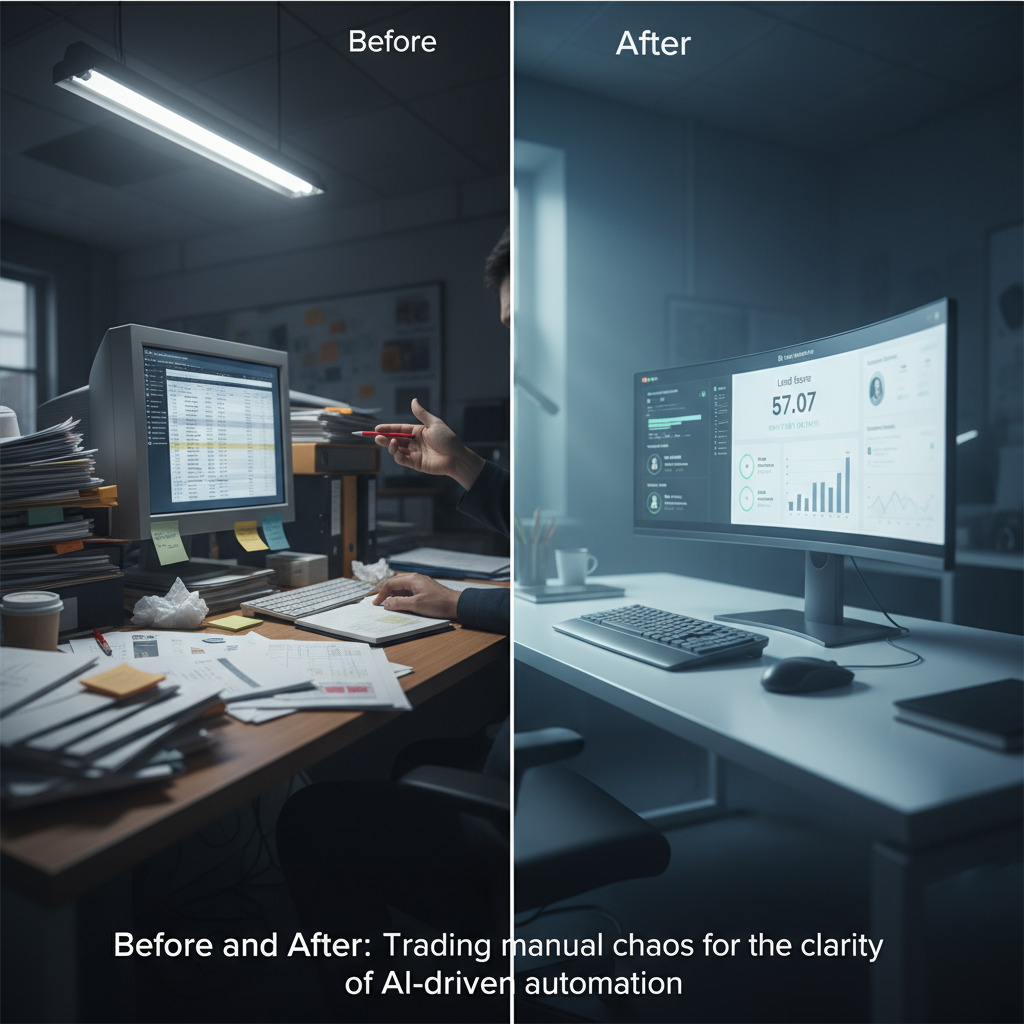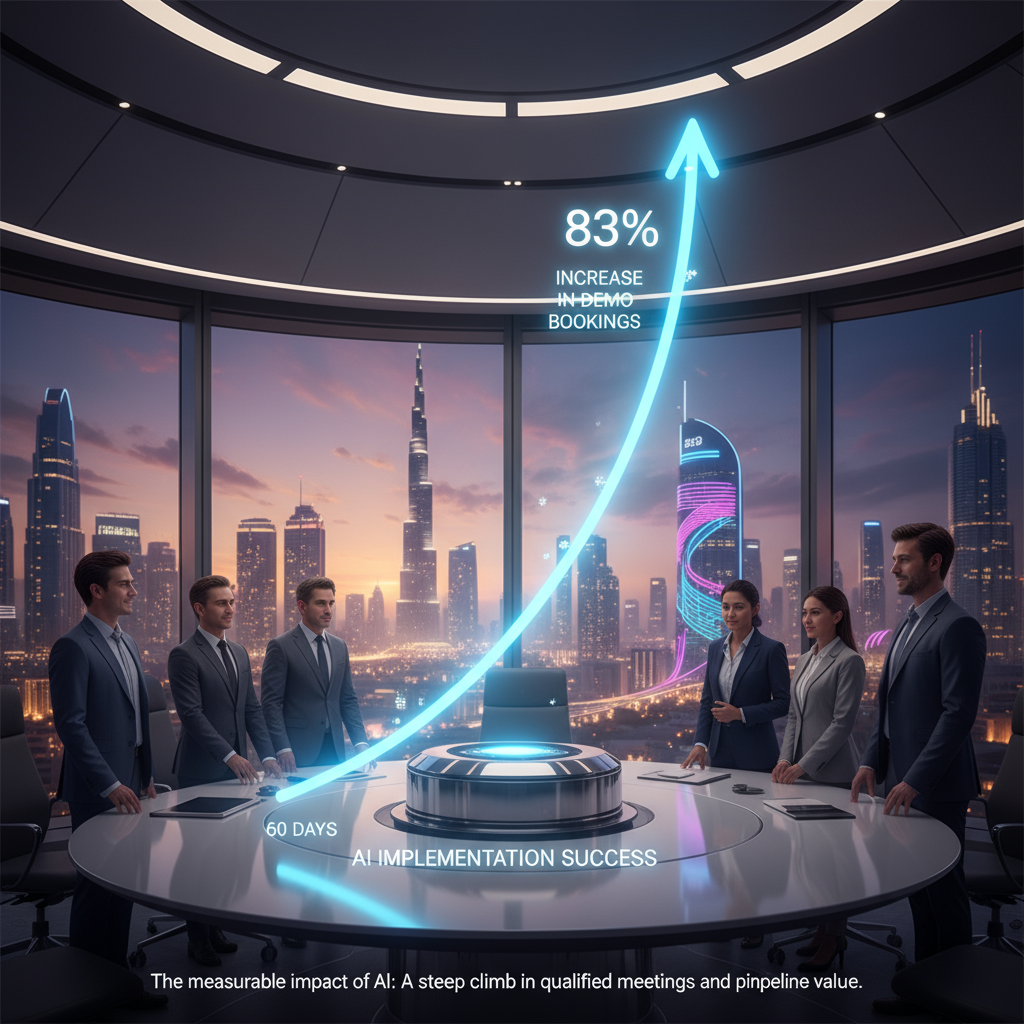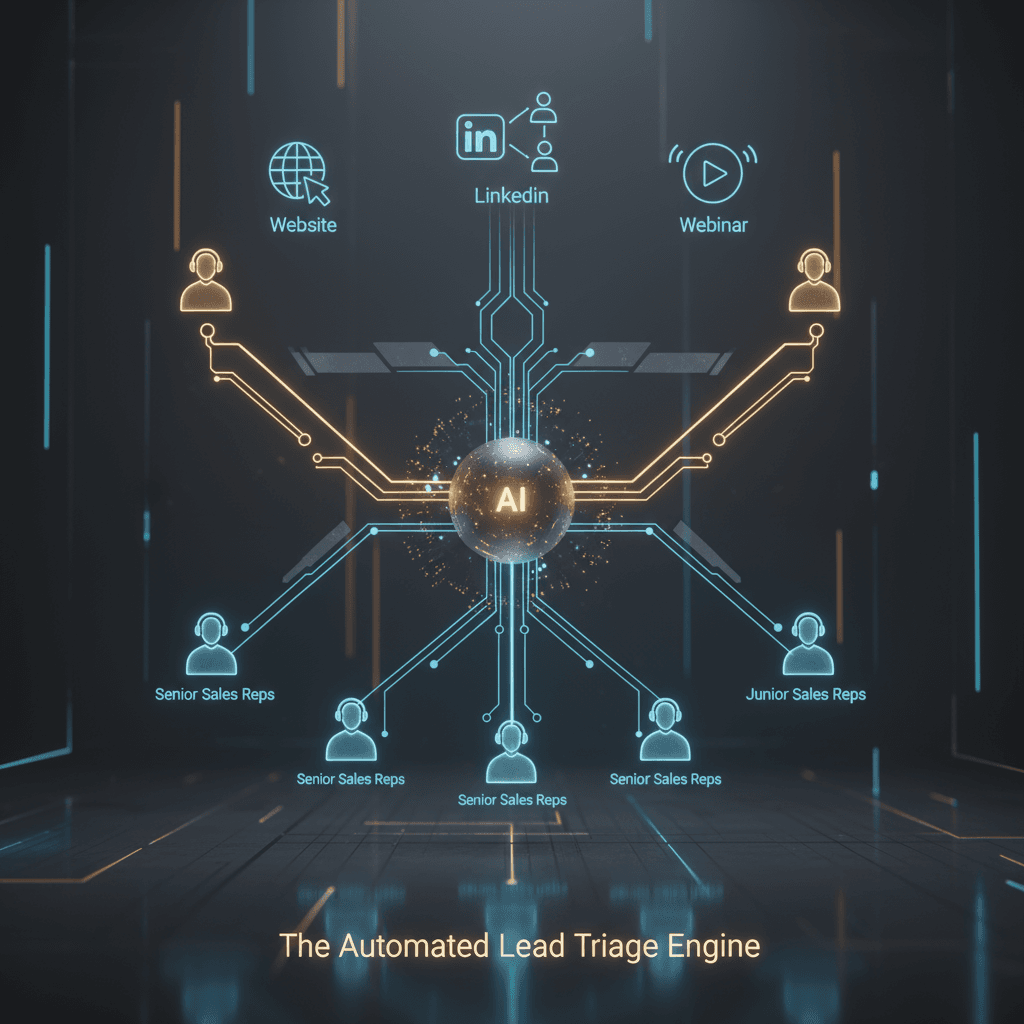Stop Wasting Sales Talent on Bad Leads: How to Automate Qualification with AI
Your best sales reps are likely wasting hours each week on leads that will never convert. This isn't just inefficient; it's a direct drain on revenue and morale. By building an AI agent to triage, score, and route inbound interest, you can ensure your team only engages with high-intent, perfectly-fit prospects, slashing response times and measurably lifting your pipeline.
Key Takeaways: What You'll Achieve
- Slash Lead Response Time: Instantly engage and qualify leads 24/7, reducing response time from hours to under 60 seconds.
- Increase Sales Team Efficiency: Automate the 80% of manual qualification work, freeing up your sales reps to focus exclusively on closing deals with high-scoring leads.
- Lift Demo Bookings by 20-40%: By engaging prospects at peak intent and routing them directly to the right AE's calendar, teams often see a significant increase in qualified meetings.
- Improve Pipeline Quality: Use a consistent, data-driven scoring model to eliminate "gut feeling" and ensure only genuinely qualified opportunities enter your pipeline.
- Gain Actionable Insights: Systematically track which channels and campaigns deliver the highest-quality leads, allowing you to double down on what works.
The Hidden Cost of Manual Lead Qualification
Every minute a high-intent lead waits for a response, their interest cools. The standard "5-minute rule" is already obsolete. Manually sifting through form fills from your website, webinar sign-ups, and content downloads is a battle against the clock that your team is set up to lose. It’s a repetitive, low-value task that burns out your most expensive resources: your sales development reps and account executives.
This manual process creates critical failure points:
- Inconsistent Scoring: Different reps qualify leads differently, leading to a subjective and unreliable pipeline.
- Slow Response Times: High-value leads submitted after business hours or on weekends go cold waiting for a human response.
- Wasted Effort: Sales reps spend more time researching and filtering than they do actually selling. Before implementing automation, one of our clients found their SDRs spent 11 hours per week just on lead research and data entry.
Building an AI workforce isn't about replacing people; it's about deploying a system that handles the tedious, time-sensitive work humans shouldn't be doing. It allows you to build an AI workforce that augments your team's core strengths.

A 5-Step Framework to Automate Lead Qualification
Deploying an AI agent for lead qualification isn't a mystical process. It's a structured project that follows a clear path from data integration to automated action. Here’s how you can map it out.
| Step | Action | Key Objective |
|---|---|---|
| 1. Define Your ICP & Scoring Logic | Map the firmographic (company size, industry) and behavioral (pages visited, content downloaded) signals of a high-quality lead. | Create a clear, rules-based definition of what constitutes a "sales-qualified lead" (SQL). |
| 2. Integrate Your Data Sources | Connect your CRM (e.g., Salesforce, HubSpot), marketing automation platform, and website analytics to a central AI brain. | Give the AI agent a 360-degree view of every lead's activity and profile. |
| 3. Configure the AI Triage Agent | Wire the agent to "listen" for new inbound leads from all channels (e.g., web forms, API endpoints). | Ensure every single lead is captured and processed instantly, 24/7. |
| 4. Sequence Automated Actions | Based on the score, program the agent to take specific next steps: book a demo, assign to a specific AE, add to a nurture sequence, or disqualify. | Create a closed-loop system where no lead is left behind and every action is optimized for conversion. |
| 5. Monitor, Benchmark & Refine | Track key metrics like speed-to-lead, qualification rate, and SQL-to-close conversion rate. | Continuously improve the scoring model based on which leads actually become customers. |
Ready to stop losing leads?
Book a 15-min demo to map your first AI lead qualification agent. We can have a proof-of-concept running in 2–3 weeks, measurably lifting your pipeline.
Schedule a ConsultationBefore & After: A Real-World Transformation
A Dubai-based SaaS company was struggling with a 4-hour average lead response time. Their three-person sales team was overwhelmed, and high-quality leads from their paid campaigns were slipping through the cracks.
After deploying an AI qualification agent, their results in the first 60 days were transformative:
- Before: 4-hour average response time. After: 48 seconds.
- Before: 12 qualified demos booked per week. After: 22 qualified demos booked per week (+83%).
- Before: Sales team spent ~30% of their time on manual qualification. After: Less than 5%, allowing them to focus entirely on closing.
This is a typical outcome when you replace a manual, inconsistent process with a dedicated, intelligent system. Knowing who Future & Happiness is means understanding we focus on these precise, measurable business outcomes.

Frequently Asked Questions (FAQ)
- 1. How long does it take to set up an AI lead qualification agent?
- For most companies with a standard CRM setup (like HubSpot or Salesforce), a proof-of-concept can be built and tested within 2-3 weeks. A full deployment with multiple custom rules and integrations typically takes 4-6 weeks.
- 2. Will this AI integrate with our existing CRM and marketing tools?
- Yes. Our agents are built to integrate seamlessly via API with all major platforms, including Salesforce, HubSpot, Marketo, Pardot, and more. This ensures data flows correctly and the agent acts as a natural extension of your current tech stack.
- 3. Is this compliant with data privacy regulations in the UAE?
- Absolutely. We build our solutions with compliance in mind, adhering to regulations like the UAE's Personal Data Protection Law (PDPL). All data processing rules are configured to meet your specific compliance and governance requirements.
- 4. What kind of data does the AI use to score leads?
- The agent combines explicit data (like company size, industry, job title from a form) with implicit behavioral data (like which pages they viewed on your site, how many times they visited, and what content they downloaded). This creates a much more accurate picture of intent than firmographics alone.
- 5. How does the AI know who to route leads to?
- You define the routing logic. Leads can be routed based on territory, company size, industry, product interest, or even round-robin to a specific team. The agent executes these rules instantly and flawlessly every time.
- 6. Can the AI interact directly with the lead?
- Yes, it can be configured to send initial qualification emails or use a conversational AI chatbot on your website to ask clarifying questions before routing to a human.
- 7. What is the typical ROI we can expect?
- While it varies, clients typically see ROI within the first quarter through a combination of increased demo bookings (20-40% lift is common), higher sales team productivity (reclaiming 5-10 hours per rep per week), and improved conversion rates from higher-quality, faster responses.
Your Next Steps to Implementation
Getting started is more straightforward than you might think. Don't aim for a perfect, all-encompassing system on day one. Instead, focus on an iterative approach that delivers value quickly.
- Audit Your Current Process: For one week, benchmark your current lead response time and qualification rate. Identify your biggest bottleneck.
- Define One High-Value Segment: Start with one specific lead type, like "Director-level contacts from companies over 200 employees who request a demo."
- Map the Ideal Workflow: Whiteboard the perfect, instant process for that one segment. What data do you need? What action should be taken? Who should be notified?
- Book a Scoping Call: Use your map to engage with an automation partner. A clear goal will make the process faster and more effective. You can start by building a simple proof of concept to test the waters.



